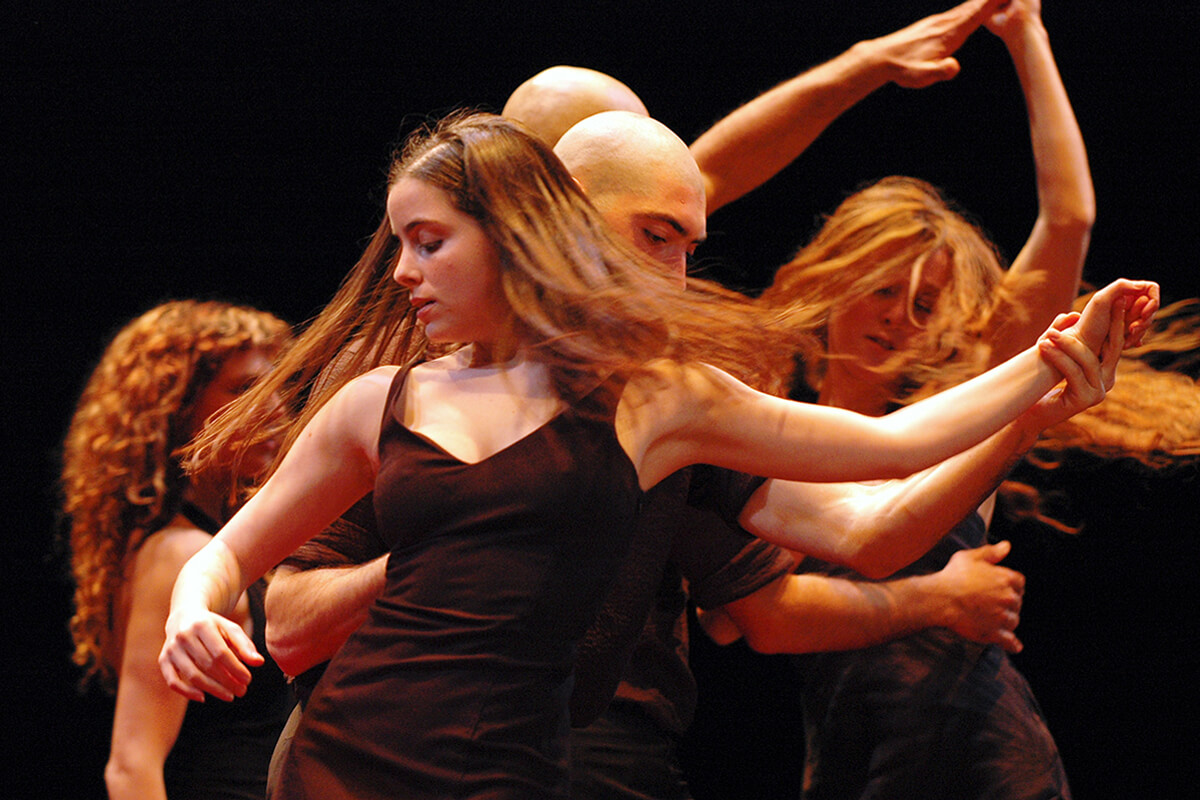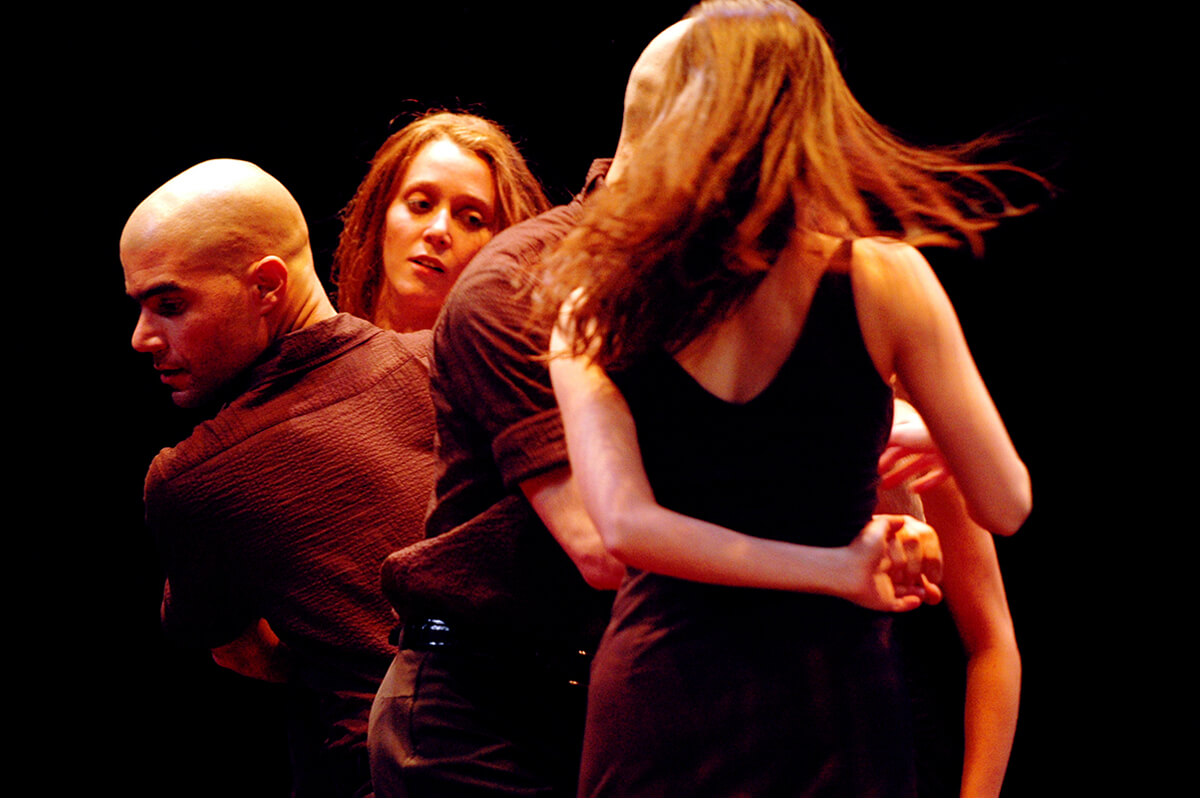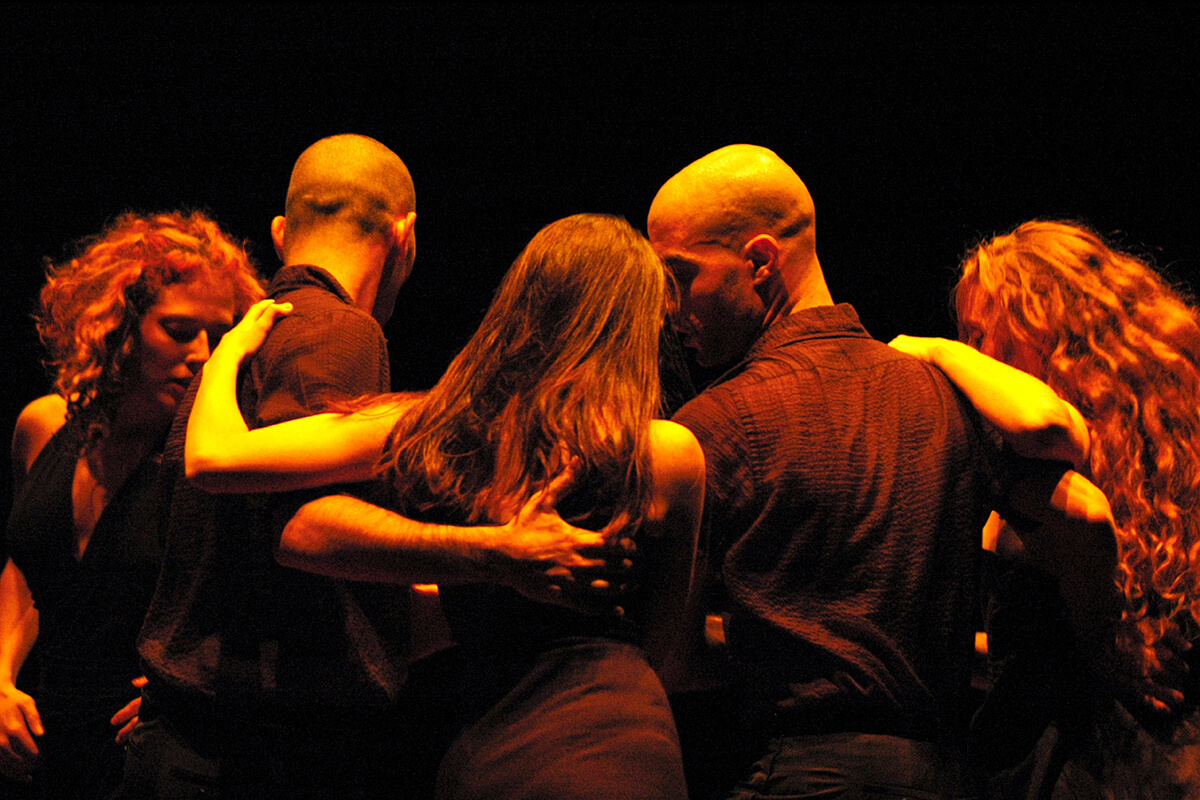THE RITE OF SPRING
EMANUEL GAT DANCE (2009)
Choreography & LightsEmanuel Gat
MusicIgor Stravinsky
PerformersRoy Assaf, Wendy Cornu, Michael Loehr, Rindra Rasoaveloson, Marie Rual
ProductionEmanuel Gat Dance
Co-ProductionSuzanne Dellal Centre Tel Aviv, Festival Uzès Danse, Monaco Dance Forum. With the help of the Dellal foundation, Théâtre de l'Olivier Istres, Ballet Monte-Carlo, Foundation of Philippe de Rothschild
Performance HistoryScène nationale, Macôn, France – Pavillon Noir, Aix-en-Provence, France – Maison de la Musique, Nanterre, France – Macao Cultural Centre, Macao, China – L‘Avant Scène, Cognac, France – Le Grand T, Nantes, France – 7th Poznan Ballet Festival, Teatr Wielki, Poznan, Poland – France Danse, Molodezhny Theatre on Fontanka, St. Petersburg, Russia – On the Edge, Sverdlovsk Academic Theatre of Musical Comedy, Yekaterinburg, Russia – Tsekh’10 Festival of Dance Theatres, Meyerhold Centre, Mosocw, Russia
Total Number of Performances15
Original Production
THE RITE OF SPRING
ProductionEmanuel Gat Dance
Co-ProductionSuzanne Dellal Centre Tel Aviv, Festival Uzès Danse, Monaco Dance Forum. With the help of the Dellal foundation, Théâtre de l'Olivier Istres, Ballet Monte-Carlo, Foundation of Philippe de Rothschild
World Premiere17 June 2004 – Festival Uzès Danse, Cour de l'Évêché, Uzès, France
AwardsBessie Award 2006 for the presentation of the program WINTER VOYAGE / THE RITE OF SPRING at Lincoln Center Festival, New York, USA
PhotographyGadi Dagon



Passionate Latin American dance (somewhat akin to salsa) set to Stravinsky’s music. Already an experiment in itself. Add to that a slightly unsettling setting (a black square and a bright red carpet), asymmetry (three women and two male dancers), and expressive performances, and the result is an incredibly sensual narrative—perhaps about the awakening of life, or maybe about the inevitability of death.
Not to mince words or appreciation, I totally adored this piece, which unfolded to me like a series of puzzles, like a series of variations on a game like “musical chairs.” [...] For atime, the conceit was two men partnering three women, slipping seamlessly from one to the next. But that changed, and changed again. I kept waiting, and waiting, with baited breath and totally engaged curiosity [...] for the resolution.
What makes Gat’s Rite of Spring unique is the radical combination he makes between Stravinsky's "high" music and Cuban salsa, a popular social dance. [...] I wish to argue that in Gat’s Rite of Spring, the connection between beauty, death, and cruelty [...] is central. [...] Gat’s Rite of Spring is also cruel and dark because it is a work that suggests that cruelty can be beautiful.

Did you know that you could dance salsa on Stravinsky? Proof of this is the scintillating performance of the choreographer Emanuel Gat. His interpretation of the "Rite of Spring" is as iconoclastic as it is exciting. [...] In this modern game of hunting, everything is beautiful and dangerous. The suspense is intense: men select a partner in turns, creating a crescendo of anxiety until the final choice is made.
The entire work seems a stylized exercise in partnered social dancing, the symmetry skewed by the imbalance between the two men and the three women. [...] In [...] the only overt bow to the sacrificial scenario of the original, one of the women [...] deliberately pins up her hair, then strolls over to the other four lying on the rug, and slowly reclines, then is left alone as the others leave. The overall consistency of vision was deeply impressive.
With movement styles from salsa to hints of hip hop, Gat's choreography is mesmerizing, and builds on itself like Ravel's "Bolero," expanding phrases as it goes. Moreover, unlike most versions of the ballet, Gat's understated and non-literal take on the familiar story of human sacrifice does not reveal until the very end which one of the dancers has been chosen to perish.




